I had first visited Midway Atoll in June 2001 and was blown away by the place. Not only was it one of the most beautiful atolls that you can imagine but the wildlife was truly spectacular, both on land, in the air and underwater.
Most people will have heard of Midway because of its association with the famous World War 2 battle and the US navy has long maintained a presence on the island. In 1997, the navy’s presence was terminated and administration was turned over to the US Fish & Wildlife service and a private operator. Between 1997 to 2001, Midway was open to the public, serviced by a once a week scheduled flight from Honolulu, with visitors staying in converted navel barracks (extremely comfortable). Unfortunately, the private operator was losing money on the visitor service and hence Midway became off-limits to the public from early 2002.
The good news is that Midway is now open again, although on a selective basis via designated photo, research, educational and war veteran tours. I went with a photo group comprising 12 other photographers. Unfortunately, there is no scuba diving offered at present but fingers crossed, there may be within the next year or two.
Midway is at the end of the Hawaiian island chain and from Honolulu is more than a third of the way to Japan. It involves a 4 hour flight via a 20-seater prop plane, so it really is right out there in the middle of the northern Pacific. These flights can only take off and land at night time. This is to minimize the risk of bird-strikes as the birds tend to be much less active after dark.
Surrounded by thousands of miles of ocean, the islands of the northwestern Hawaiian archipelago have become a peaceful oasis for seabirds, migrating shorebirds and marine life. 19 seabird species, numbering nearly two million, nest on Midway atoll each year.
When you step off the plane (remember it is dark), the first thing that you are aware off is a cacophony of bird noise. But it is only when you wake the next morning that it becomes clear just how many birds there are. They are everywhere and as one walks or cycles around the island (my preferred method of getting around although there are golf carts) you have to walk around them or zig zag your bike to avoid them.
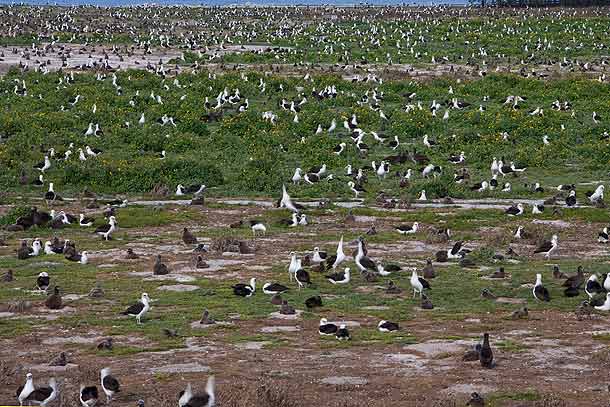
Although several species of birds are visible, one dominates – the albatross. If you haven’t seen an Albatross before, they are extraordinary, almost mythical creatures. The two adjectives that seem best to describe them are “regal” and “majestic”.
From November through to July, Midway is alive with albatrosses, boosting the largest colonies of Laysan and Black-Footed albatrosses in the world. With nearly 440,000 breeding pairs on Midway (75% of the world’s population), the Laysan albatross is the atoll’s most famous resident. Although they are among the smallest of the albatross species, an adult Laysan can weigh more than 7lbs and have a wing span of 80 inches. They have a long lifespan (up to and sometimes over 50 years), have the same mate for life, and return to the same area every year to build their nest and raise a single chick.
The first Laysans return to Midway in late October and early November and generally lay their eggs by mid-December. Chicks hatch in January & February and are ready to fledge in June or July. Fledglings may spend up to five years at sea. By August, all the Albatrosses have left the island, heading to the far north Pacific where they wander over great expanses of ocean. Aside from the periods when they court , breed and feed their chicks – less than 5% of their life – the rest is spent at sea. Albatrosses can go for months and before they mature, years, before they set foot on terra firma and may not even glimpse land during this time.
In doing so, they cover distances equivalent to flying around the earth at the equator three times every year. A 50 year old albatross will fly at a minimum, a staggering 3.7 million miles in its life.
Although they will occasionally alight on the ocean’s surface, I still find it incredible that they can glide for such long periods, often in extreme weather. But this is what albatrosses are: the world’s most perfect gliding machines. Consider this: some albatross species have lower heart beats during flight than while sitting on an egg. They use no more energy while flying than when brooding a chick upon their nest. Here’s one of their secrets: for the long hours and days of flying, albatrosses don’t really hold their wings out; using an extraordinary wing lock at the shoulder and an elbow lock for rigidity, they snap them into the unfolded position like opened switchblades.
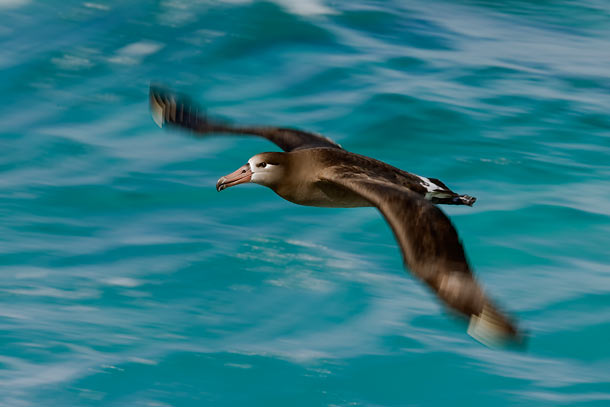
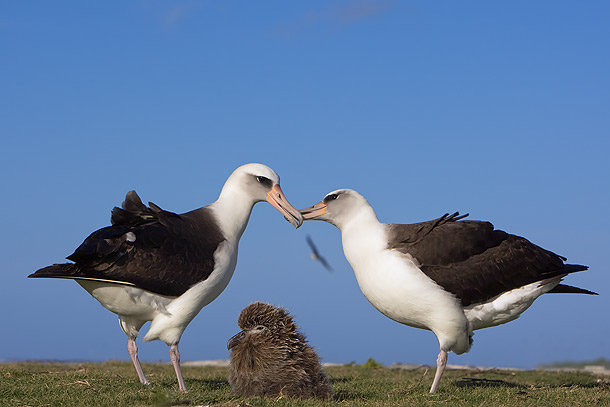
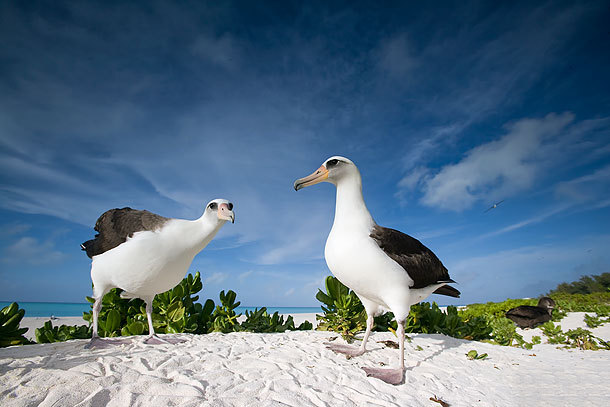
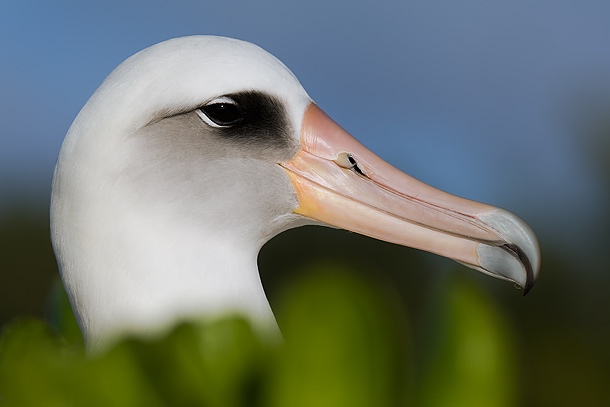
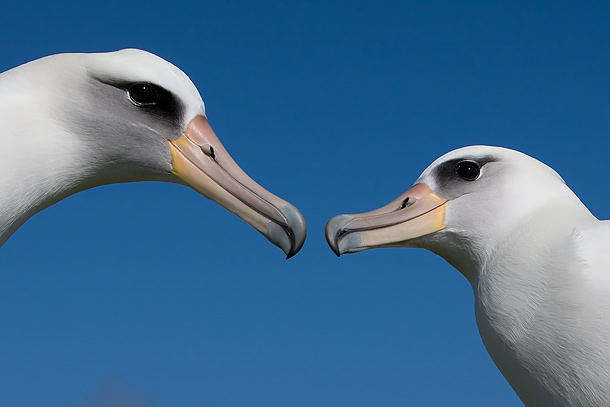
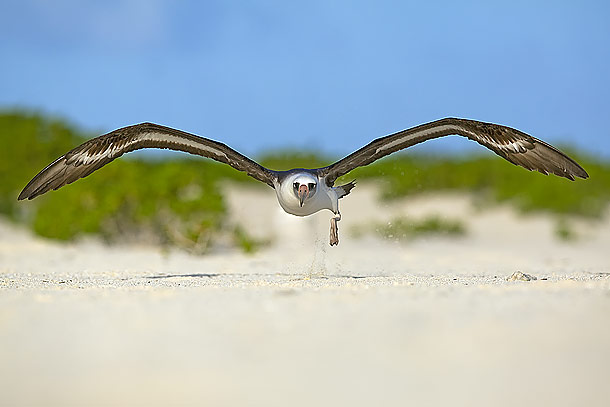
One of the spectacles that you will witness in any albatross colony is the “courtship dance”. After observing it several times you can see that while complicated, there is a pattern to it. Two partners will square off and go through an elaborate dance ritual of shaking their bills together before pausing to thrust their heads skywards accompanied by a loud cry. This latter act is often undertaken in a synchronized manner, producing a symmetrical form. It can take young birds years to master before they can apply it to woo a mate.
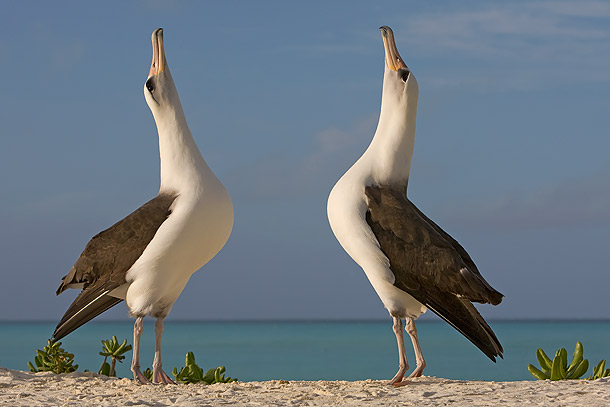
Black-Footed albatrosses are less numerous than the Laysan species with about 50,000 nesting pairs on Midway, or about 35% of the world’s breeding population.
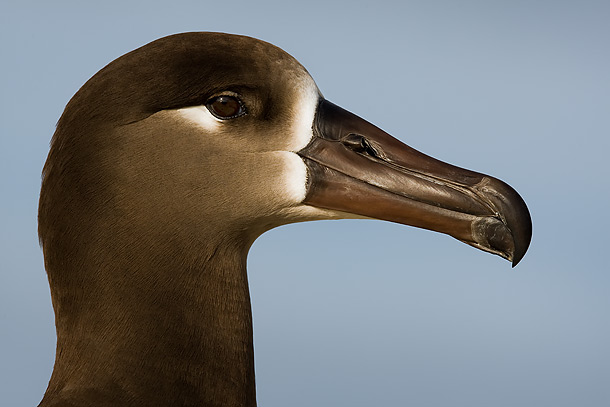
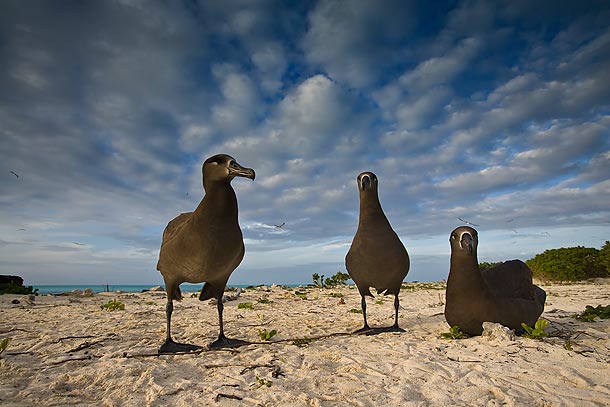
In recent years, two to four very rare Short-Tailed albatrosses have been making their way to Midway. On my latest trip there was one on Midway and two on nearby Sand Island. Only around 2,000 of these birds remain in the world and almost all return to the small volcanic island of Torishima off Japan for their nesting season. Millions of these birds were hunted and killed in the late 1800s for their feathers and in 1939 their breeding grounds were buried under 30-90 ft of lava.
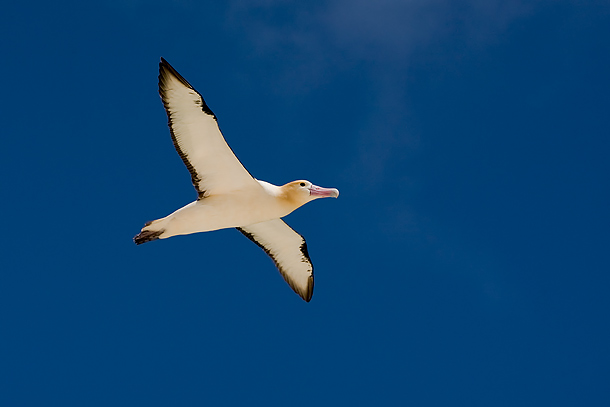
Other bird species that are prominent on Midway include Bonin Petrals, Wedged –Tailed and Christmas Shearwaters, Red-Tailed Tropic birds, Red-Footed, Brown & Masked Boobies, Great Frigate birds, Brown & Black Noddies, Sooty and Gray-Backed Terns and my personal favourite, White Terns (below).
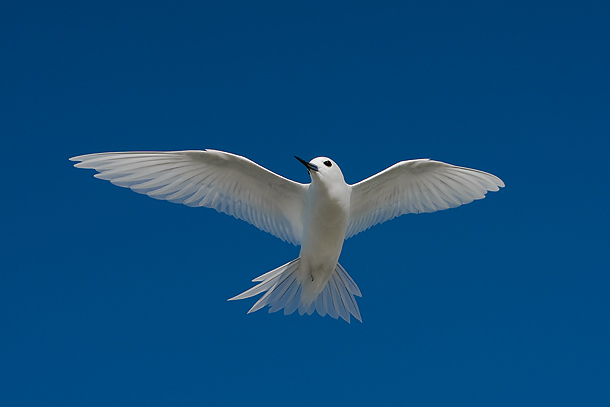
Adults do not build a nest, but lay their single egg on just about any surface whether it be the branches of an Ironwood tree or on an air-conditioner. The chicks’ large claws are important adaptations that allow them to hold on to their nest site during strong winds.
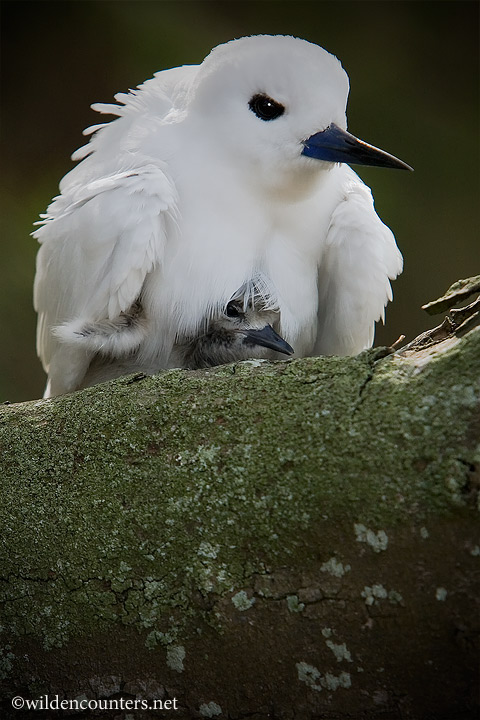
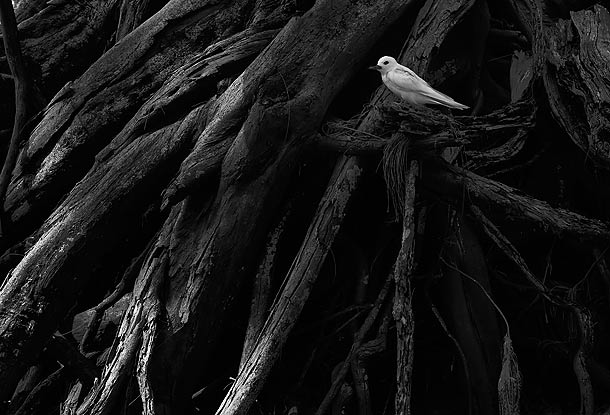
Midway is also home to the world’s second-rarest duck, the Laysan duck with around 100 residing on Midway. Its main stronghold is Laysan Island (also part of the northwestern Hawaiian archipelago) where there are 800.
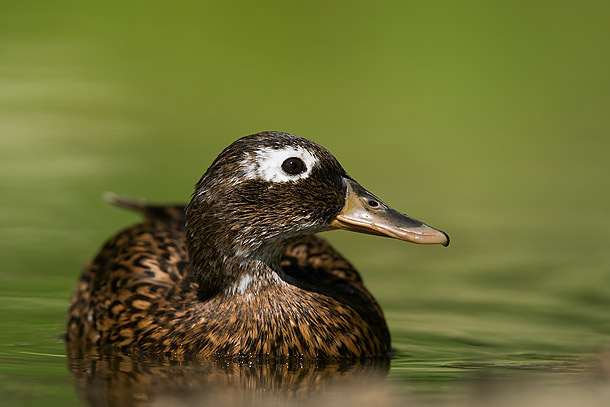
Midway’s avian residents face many threats. One of the most visible stems from the ingestion of plastic material. The world’s oceans are becoming progressively more polluted and floating plastic debris is a major hazard to sea birds. Fish eggs are often attached to plastic flotsam and sea birds are unable to distinguish these from their normal marine life diet. While an adult albatrosses’ digestive system can usually handle a certain amount of plastic, the main problem lies when they inadvertently regurgitate this plastic during the process of feeding their chicks. Ingestion of plastic by albatross chicks can lead to either dehydration or a feeling of being “full” and subsequent failure to eat. Both can result in death. The following picture clearly shows what can often be found in the stomach contents of a chick.
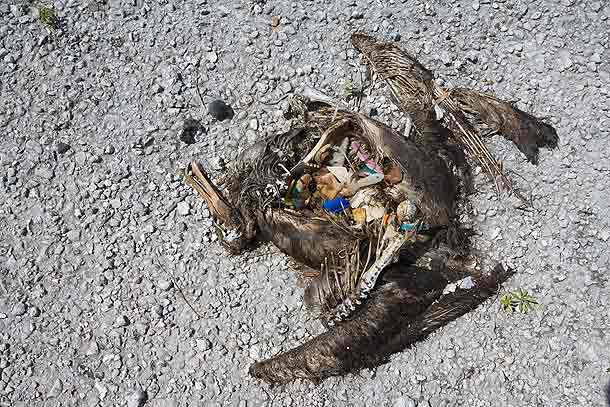
While predatory species, in particular rats, that in previous generations wreaked havoc on seabird eggs and chicks have now been eliminated, the Fish & Wildlife staff are struggling to control alien plants, in particular Verbesina, a deceptively pretty yellow-flowering plant. Compared to my trip in 2001, when this plant was barely evident, it is now widespread and has reduced the availability of suitable nesting sites for Midway’s birds.
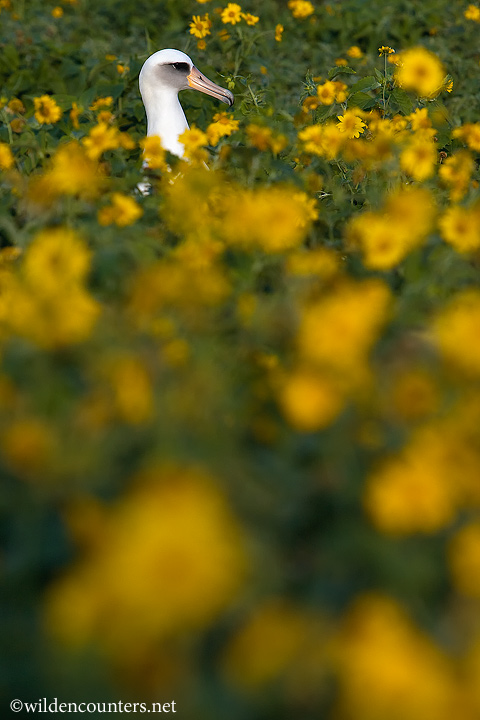
Despite these problems, Midway remains a magical place which along with the Masai Mara in Kenya remains one of my two favourite wildlife destinations. The addition of scuba diving availability would really put it over the top. From my 2001 experience, Midway’s waters offer one of the world’s great pelagic experiences with shark numbers that rival, if not exceed, those of much better known shark sites. And in the month of June, there is the added attraction of Tiger sharks coming into Midway’s vast lagoon to hunt for fledgling albatross chicks.
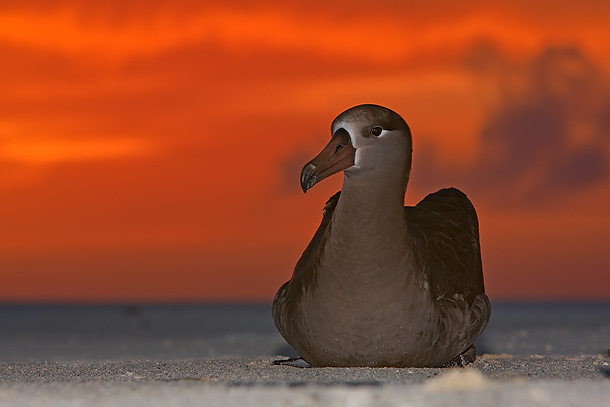
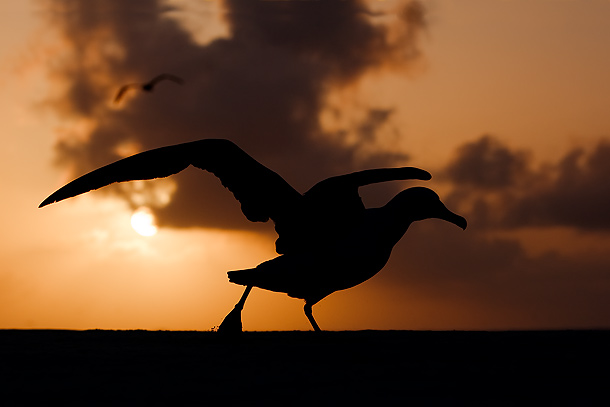
Be the first to comment.